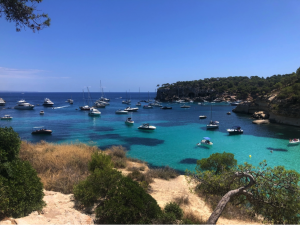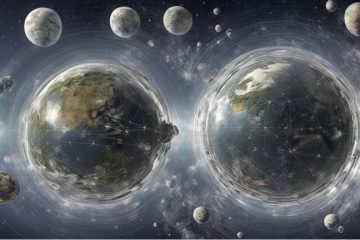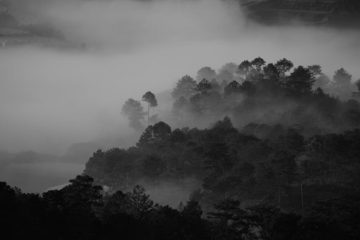Mucho, Mucho, Mucho Amor, For the Planet

I have been thinking about planetary erotics lately. By that I mean the love of bodies, internal and external to us. As David Abrams suggests, biology and the biosphere are all only possible because of that most basic attraction of all: gravity. The gravity that brings our porous, changing bodies together in ways that can be both good and deadly, is the basis for erotic love. How have we limited ourselves into thinking that eros is mostly for genital, romantic sex in the bedroom with one or more people? Isn’t this an odd limitation? Are not our bodies erotic in their entirety? One finds, for instance, much more embodied practices in many yogic traditions, including the erotic. I remember one of my grad school teachers in a discussion of Michel Foucault talking about the social construction of private parts. It could have just as easily been the case that we “western moderns” cover our ears, or our heads (as in some religions) than our butts and front bits. Remember, not all cultures have the hang-ups on frontal and rear nudity, not even all cultures within the constructed “western” world. Perhaps this blocking off from, shaming, and distancing ourselves from the erotic bodies that make up our evolving planetary community is part of how we have developed ecological deficit disorder and all the problems that go along with that. In this brief blog, I offer three personal vignettes onto erotic ecology.
Scene 1: Mucho, Mucho, Mucho Amor
I started thinking down this path when I recently watched the Walter Mercado documentary on Netflix. For readers that don’t know who he is, he was an astrologer and psychic to famous peoples and notable politicians, as well as being a household name across most of Latin America and the Latino community in the US throughout the 1980s and 90s. In terms of dress: think the Latin American version of Liberace, or maybe of Louis the 14th of France. In terms of his sexuality: think David Bowie style androgyny and gender bending. In terms of his message: it was all about spreading love and peace to the world through the medium of astrology. There is a particular scene in which the documentarian asks about his sexuality and he replies, and I paraphrase: “I have sex with the entire planet, with all of life, I’m always having sex with the world.” This extension of the erotic to all of life is at the heart of an erotic ecology. I immediately thought here, too, of artist Annie Sprinkle’s notion of being “ecosexual,” or having a romance with the rest of the natural world. This sometimes takes the shape of what in German they call “Freikörperkultur” (nudists), and other times takes the form of marrying trees, or mountains, or other non-human entities. An erotic and romantic relationship need not always be sexual, but it is sensual, and practicing a little more erotic love for the rest of the natural world may be exactly what we and the planet need at this moment.
Scene 2: Andreas Weber’s Erotic Ecology
German biologist and writer Andreas Weber has written “the book” on erotics and ecology. I began reading his book on a recent trip to Mallorca. The purpose of the trip was to have time to “recharge” by the ocean—I am very much a water person—after having been under lockdown due to the Corona pandemic. Weber reminds us that erotic relationships don’t always end up “nice,” and that we can be hurt or even killed by them. However, it is futile to think we can wall ourselves off. We may be able to trick the rest of the natural world through technology and medicine, just long enough to live 80ish years, but we can’t expect that we will (as some transhumanists argue) live forever. As humans, we are part of this planet and we have the desire (rightly so) to carve out a space for us to live, but we must do so in the way that an open relationship might work: we don’t own anything, especially not other bodies, and we can’t treat other earth entities as a mere means to human ends. Let me end this scene with a quote from Weber: “This world … comprises a constantly oscillating network of dynamic interactions in which one thing changes through the change of another. … And to make this relationship possible, it is necessary that the two sides touch each other, that they nestle into one another, penetrate one another, grind themselves against each other. This is the fundamental erotic that constantly makes new things out of other things” (p. 22).
Scene 3: My Date with Nature
The photo included with this post I put on social media with the caption, “sometimes you just need a romantic date with the rest of the natural world.” A family member responded, “The only true and eternal romance.” That is the heart of erotic ecology: the recognition that we are part of this never-ending romance with the rest of the natural world. That doesn’t mean naïvely that “all will be well.” What romance has ever existed in which the partners involved haven’t ended up hurting one another now and then. In the case of erotic ecology, just as an erotic human encounter can hurt and kill us (with one disease or another), so with the rest of our encounters. Being in an open, erotic relationship with nature means also admitting to our vulnerabilities. We are precisely not islands, and this has good, bad, and ugly implications for us. We need our boundaries in order to enter into consensual relations (as much as that is possible in a sexist, racist, and anthropocentric world). We need critical moments such as extinction rebellion activism and conservation biology that jar us out of our anthropocentrism, Black Lives Matter that highlights and uproots systemic racism, and Me Too that highlights and uproots systemic sexism, among other critical movements. These important critical voices are crucial for highlighting the damage being done to certain bodies when they are left out of an understanding of the erotics of ecology, or when eroticism becomes possessive and/or dangerous. An erotics of ecology does not ask us to lose ourselves in nature, but to find ourselves amidst all the other bodies and entities that make each of us, and every other entity in the rest of the natural world, up.
#
Whitney A. Bauman is Co-Founder and Co-Director of Counterpoint: Navigating Knowledge, and Associate Professor of Religious Studies at Florida International University. He is the co-author (with Kevin O’Brien) of Environmental Ethics and Uncertainty: Wrestling with Wicked Problems (Routledge 2019), and Religion and Ecology: Developing A Planetary Ethic (Columbia University Press, 2014).
Counterpoint blogs may be reprinted with the following acknowledgement: “This article was published by Counterpoint Navigating Knowledge on 21 July 2020.”
The views and opinions expressed on this website, in its publications, and in comments made in response to the site and publications are those of the author(s) and do not necessarily reflect the views and opinions of Counterpoint: Navigating Knowledge, its founders, its staff, or any agent or institution affiliated with it, nor those of the institution(s) with which the author is affiliated. Counterpoint exists to promote vigorous debate within and across knowledge systems and therefore publishes a wide variety of views and opinions in the interests of open conversation and dialogue.
Photo Credit: Cala El Mago, Mallorca, Spain – © Whitney A. Bauman, 2020



